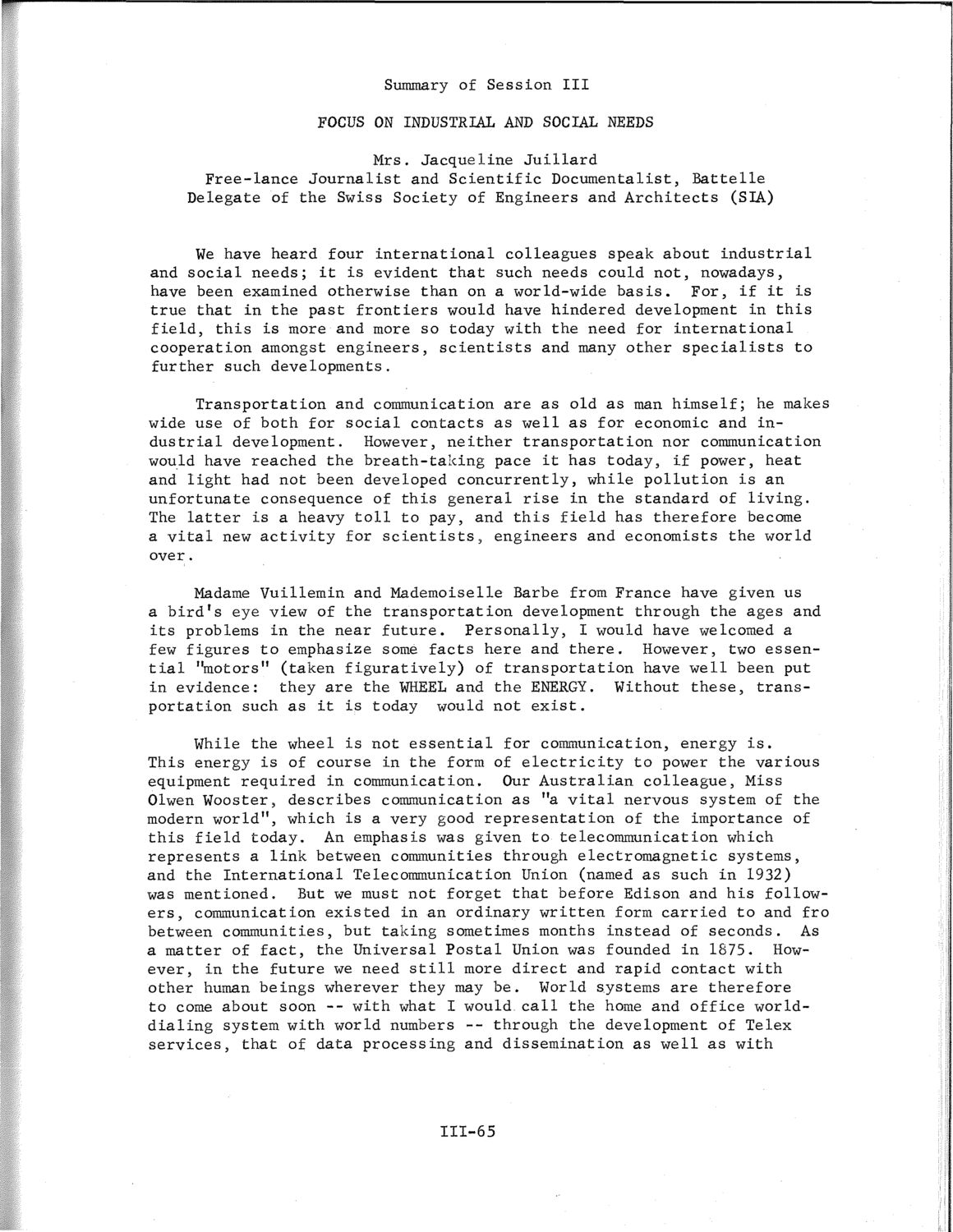| |
| |
Caption: SWE - Proceedings of the First International Conference of Women Engineers and Scientists
This is a reduced-resolution page image for fast online browsing.

EXTRACTED TEXT FROM PAGE:
Summary of Session III FOCUS ON INDUSTRIAL AND SOCIAL NEEDS Mrs. Jacqueline Juillard Free-lance Journalist and Scientific Documentalist, Battelle Delegate of the Swiss Society of Engineers and Architects (SIA) We have heard four international colleagues speak about industrial and social needs; it is evident that such needs could not, nowadays, have been examined otherwise than on a world-wide basis. For, if it is true that in the past frontiers would have hindered development in this field, this is more and more so today with the need for international cooperation amongst engineers, scientists and many other specialists to further such developments. Transportation and communication are as old as man himself; he makes wide use of both for social contacts as well as for economic and industrial development. However, neither transportation nor communication would have reached the breath-taking pace it has today, if power, heat and light had not been developed concurrently, while pollution is an unfortunate consequence of this general rise in the standard of living. The latter is a heavy toll to pay, and this field has therefore become a vital new activity for scientists, engineers and economists the world over. Madame Vuillemin and Mademoiselle Barbe from France have given us a bird's eye view of the transportation development through the ages and its problems in the near future. Personally, I would have welcomed a few figures to emphasize some facts here and there. However, two essential "motors" (taken figuratively) of transportation have well been put in evidence: they are the WHEEL and the ENERGY. Without these, transportation such as it is today would not exist. While the wheel is not essential for communication, energy is. This energy is of course in the form of electricity to power the various equipment required in communication. Our Australian colleague, Miss Olwen Wooster, describes communication as "a vital nervous system of the modern world", which is a very good representation of the importance of this field today. An emphasis was given to telecommunication which represents a link between communities through electromagnetic systems, and the International Telecommunication Union (named as such in 1932) was mentioned. But we must not forget that before Edison and his followers, communication existed in an ordinary written form carried to and fro between communities, but taking sometimes months instead of seconds. As a matter of fact, the Universal Postal Union was founded in 1875. However, in the future we need still more direct and rapid contact with other human beings wherever they may be. World systems are therefore to come about soon -- with what I would call the home and office worlddialing system with world numbers -- through the development of Telex services, that of data processing and dissemination as well as with 111-65
| |